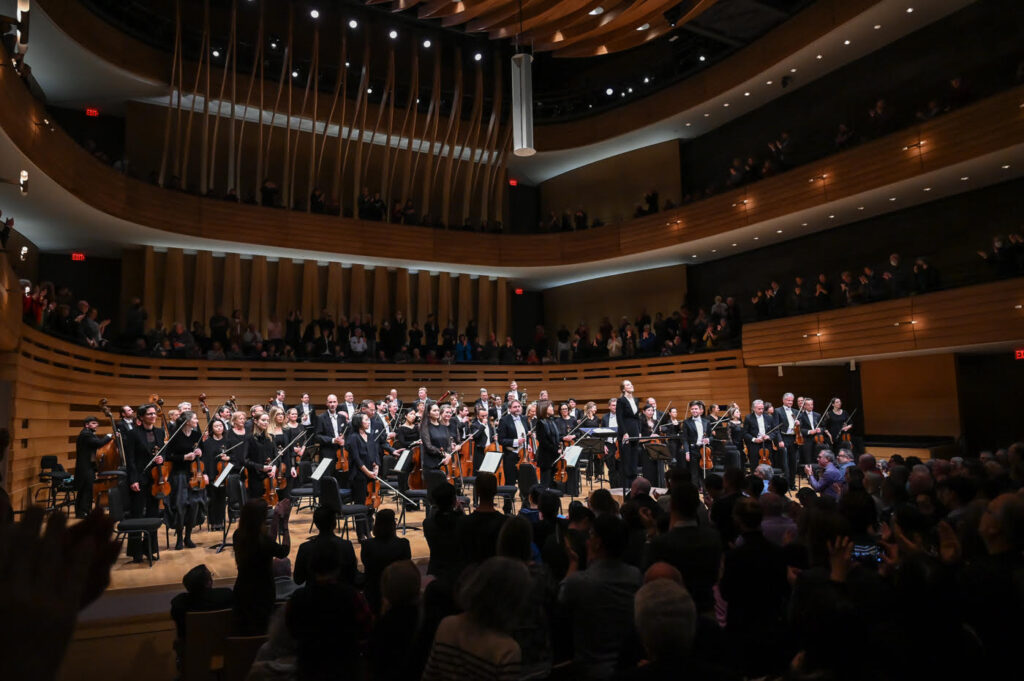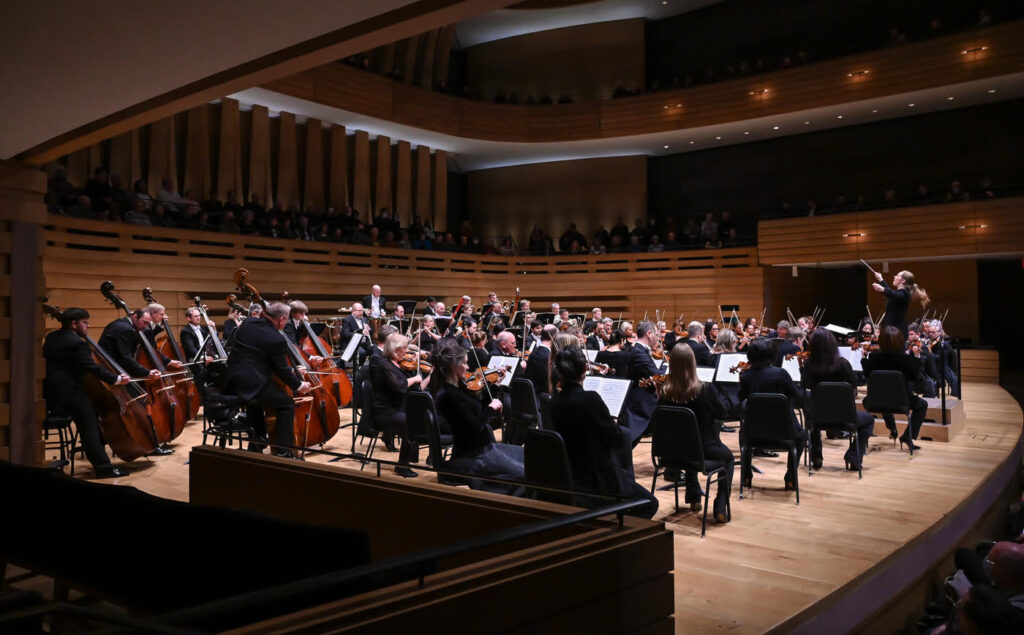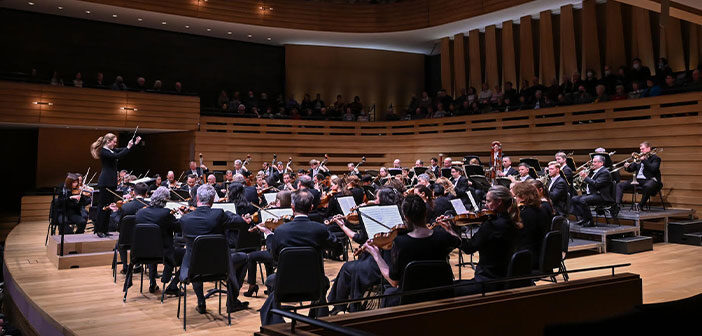As previously reported in my review of the Toronto Symphony Orchestra’s concert on November 22, in the span of a single week, two big-name conductors cancelled their Toronto engagements due to ill health. Michael Tilson Thomas, 78, is suffering from brain cancer, while Daniel Barenboim, 80, had to step down from conducting duties due to neurological vasculitis.
Both conductors have enriched the classical music world immeasurably with their artistry for decades, and although they are now in their sunset years, their cancellations are still sad. Fortunately, audiences were treated to worthy replacements, American conductor David Robertson who stood in for Tilson Thomas, and Lithuanian conductor Giedrė Šlekytė for Barenboim.

Staatskapelle Berlin orchestra (Photo courtesy of The Royal Conservatory/Koerner Hall; Lisa Sakulensky)
Though still in the early stages of her career, Giedrė Šlekytė has already amassed an impressive dossier, leading such top rank orchestras as the Munich Philharmonic, Vienna Symphony and Staatskapelle Dresden, in addition to the Staatskapelle Berlin. Interestingly, in a span of ten days, Toronto music lovers have the good fortune of experiencing the artistry of not one, but two fast-rising female conductors from the former East Bloc, that of the Ukrainian Oksana Lyniv, and now the Lithuanian Maestra Šlekytė.
I attended the second of two performances at Koerner Hall on Sunday afternoon. The place was jammed to the rafters, and with top ticket of $250, this stood as a real testament to the drawing power of the Staatskapelle Berlin. Having heard this Orchestra play on several occasions in the past, most recently spring 2019 in the pit of the Staatsoper Unter den Linden, I was looking forward to hearing them as the “main attraction.”
I was not disappointed. From the beginning of the Allegro in Brahms’ Third Symphony, with its powerful opening chords, I was completely drawn into the orchestra’s playing. The acute yet smooth, incisive yet mellow strings and woodwinds, melding together to form waves upon waves of sound washing over me: I remember thinking to myself how lucky I was to be there.
It is not easy to pick a single highlight. Was it the supremely lyrical outpouring of the strings in the Andante? The smooth as silk playing of the Third Symphony? Or the dramatic fortissimos of the Fourth? I loved it all. To my ears, there was plenty of power, but it never turned to harshness, always well-judged by Maestra Šlekytė, who, for her part, conducted with energy and passion. She used plenty of grand gestures – her body language reminded me of Oksana Lyniv’s, just a few days earlier in the Dvořák 8th.

Staatskapelle Berlin orchestra (Photo courtesy of The Royal Conservatory/Koerner Hall; Lisa Sakulensky)
At the risk of repeating myself, the adjectives I used to describe the performance of the Third Symphony are applicable to the Fourth. I was struck by the absolute precision, the amazing unison, particularly in the quick-silver Third Movement, the Allegro giocoso. It was a truly stunning display of what a great orchestra can do. The Final movement, a passacaglia, was breathtaking. For me, the gold standard performance of this piece is Carlos Kleiber conducting the Bavarian Radio Symphony. Staatskapelle and Šlekytė, though, gave Maestro Kleiber a run for his money.
North American music fans are trigger-happy when it comes to standing ovations, but this time it was very well deserved. As I was leaving, I even overheard grumbling from some quarters about the lack of an encore! Instead of being greedy, let’s just persuade the powers that be to bring the Staatskapelle Berlin back to Toronto for future performances…. of Richard Strauss’s Also Sprach Zarathustra, perhaps?
Koerner Hall
Brahms: Symphony No. 3 in F Major op.90 and Symphony No. 4 in E Minor op.98
Giedrė Šlekytė, conductor
Staatskapelle Berlin
November 26, 2023














